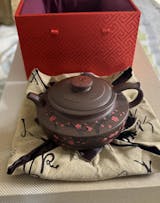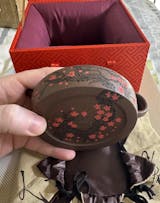
How the zisha artists make a Yixing zisha teapot?
Have you ever wondered how those beautiful and intricate zisha teapots are made? In this blog post, we will explore the traditional process of making a zisha teapot, a cherished art form that dates back centuries in Chinese culture.
What is Zisha Clay?
Zisha clay, also known as purple clay, is a rare and unique clay found only in the Yixing region of China. It is prized for its porous nature, which allows it to absorb the flavors of the tea brewed in it over time, enhancing the taste of the tea with each use.
Gathering and Preparation
The first step in making a zisha teapot is gathering the clay from the mines in the Yixing region. The clay is then cleaned, purified, and left to age for several years to remove impurities and improve its plasticity.
Handbuilding and Shaping
Skilled artisans then handbuild the teapot using traditional techniques that have been passed down through generations. The clay is shaped into the desired form, whether it be a classic round shape or a more intricate design.
Carving and Detailing
Once the basic shape is formed, the artisan will carve intricate designs and details into the teapot using special tools. This is where the true artistry of zisha teapot making shines, as each teapot is a unique work of art.
Firing and Finishing
The final step in the process is firing the teapot in a kiln at high temperatures. This not only strengthens the clay but also gives it the distinctive purple color that zisha clay is known for. After firing, the teapot is polished and finished to perfection.
Caring for Your Zisha Teapot
To ensure your zisha teapot lasts a lifetime, it is important to care for it properly. After each use, rinse the teapot with hot water and allow it to air dry completely. Avoid using soap or harsh chemicals, as they can damage the porous clay.
By following these steps and caring for your zisha teapot with love and attention, you can enjoy the beauty and functionality of this traditional Chinese art form for years to come.


